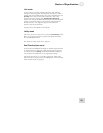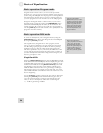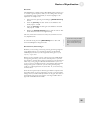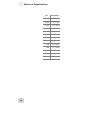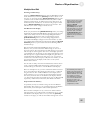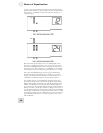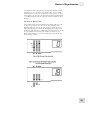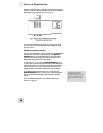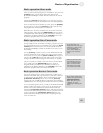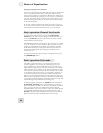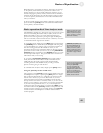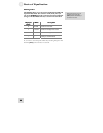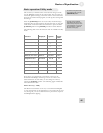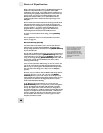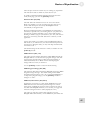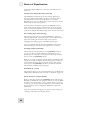
Basics of Equalization 3
Basic operation: Store mode
Once you have created a program you would like to save, press the
[STORE] button to enter Store mode. This will cause the
Numerical LED Display to blink with the number of the current
program.
Turning the [VALUE] encoder allows you to choose a program
number between 00-99 as the destination for your edited program.
Once you have chosen the location you want, press the [STORE]
button again or just press the [VALUE] encoder. This will store
the program into the user location you selected.
Remember, if at any time you decide you do not want to save the
edited program, simply press the [PROGRAM] button to return
to Program mode. Your edited program will still be in memory, as
indicated by the flashing LED above the [STORE] button. The
destination program will not have been overwritten.
Basic operation: Save Curve mode
Saving an EQ curve is very similar to storing a program. Once you
have created an EQ curve you would like to save, press the [SAVE
CURVE] button to enter Save Curve mode. This will cause the
Numerical LED Display to blink the number of the curve you’ve
been editing.
A
s we said earlier, you
should leave Curve 00’s gain
settings at 0 so that you may
use it for building new
curves. This probably will
save you a lot of time and
effort.
Use the [VALUE] encoder to select a curve number between 00-
99 as the destination for the edited curve. Once you have chosen
the location you want, press the [SAVE CURVE] button again or
just press the [VALUE] encoder. This will save the curve’s gain
settings and Channel Level setting into the location you selected.
When you enter Save Curve
mode, Real Time Analyzer
mode is disabled. You will
have to re-enter the Real
Time Analyzer mode after
y
ou exit Save Curve mode.
And if at any time you decide you do not want to save the edited
curve, simply press the [PROGRAM] button to return to
Program mode. Your edited curve will still be in memory, as
indicated by the flashing LED above the [STORE] button. The
destination program will not have been overwritten.
Basic operation: Retrieve Curve mode
One of the quickest ways to create a program is to select curves
from the Curve Bank and copy them one at a time into a channel
or Link Group. To enter Retrieve Curve mode, hold one of the
[CHANNEL SELECT] buttons as you turn the [VALUE]
encoder. The Curve LED will light to indicate that the Numerical
LED Display is now showing curve numbers from the Curve Bank.
Curves will be applied to the
channel once you release the
[
CHANNEL SELECT]
button. This allows you to
“audition” the curves
visually before changing the
audio.
As you scroll through the curves you will see the Band Gain LEDs
change to reflect the settings of the curves you are passing over,
but they will not be loaded into the selected channel until you
release the [CHANNEL SELECT] button. This prevents having
to listen to the audio through curves you know you don’t want. As
soon as you release the [CHANNEL SELECT] button, the
channel will assume the EQ and Channel Level settings for the
curve you retrieved.
41



